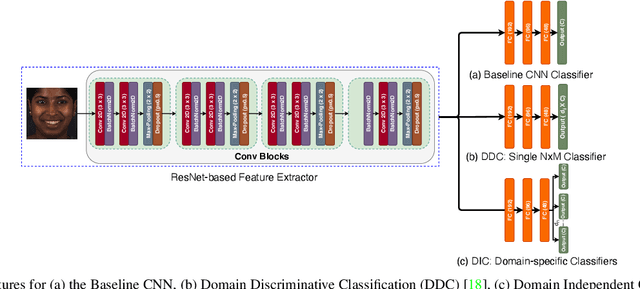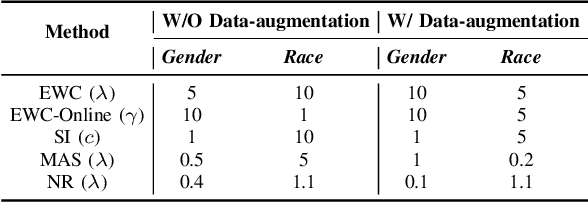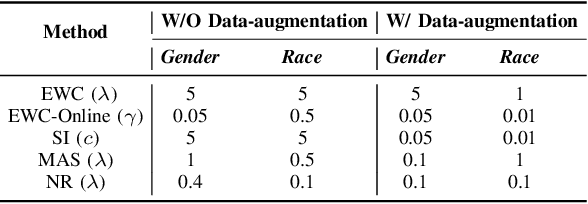Domain-Incremental Continual Learning for Mitigating Bias in Facial Expression and Action Unit Recognition
Paper and Code
Mar 15, 2021



As Facial Expression Recognition (FER) systems become integrated into our daily lives, these systems need to prioritise making fair decisions instead of aiming at higher individual accuracy scores. Ranging from surveillance systems to diagnosing mental and emotional health conditions of individuals, these systems need to balance the accuracy vs fairness trade-off to make decisions that do not unjustly discriminate against specific under-represented demographic groups. Identifying bias as a critical problem in facial analysis systems, different methods have been proposed that aim to mitigate bias both at data and algorithmic levels. In this work, we propose the novel usage of Continual Learning (CL), in particular, using Domain-Incremental Learning (Domain-IL) settings, as a potent bias mitigation method to enhance the fairness of FER systems while guarding against biases arising from skewed data distributions. We compare different non-CL-based and CL-based methods for their classification accuracy and fairness scores on expression recognition and Action Unit (AU) detection tasks using two popular benchmarks, the RAF-DB and BP4D datasets, respectively. Our experimental results show that CL-based methods, on average, outperform other popular bias mitigation techniques on both accuracy and fairness metrics.
 Add to Chrome
Add to Chrome Add to Firefox
Add to Firefox Add to Edge
Add to Edge